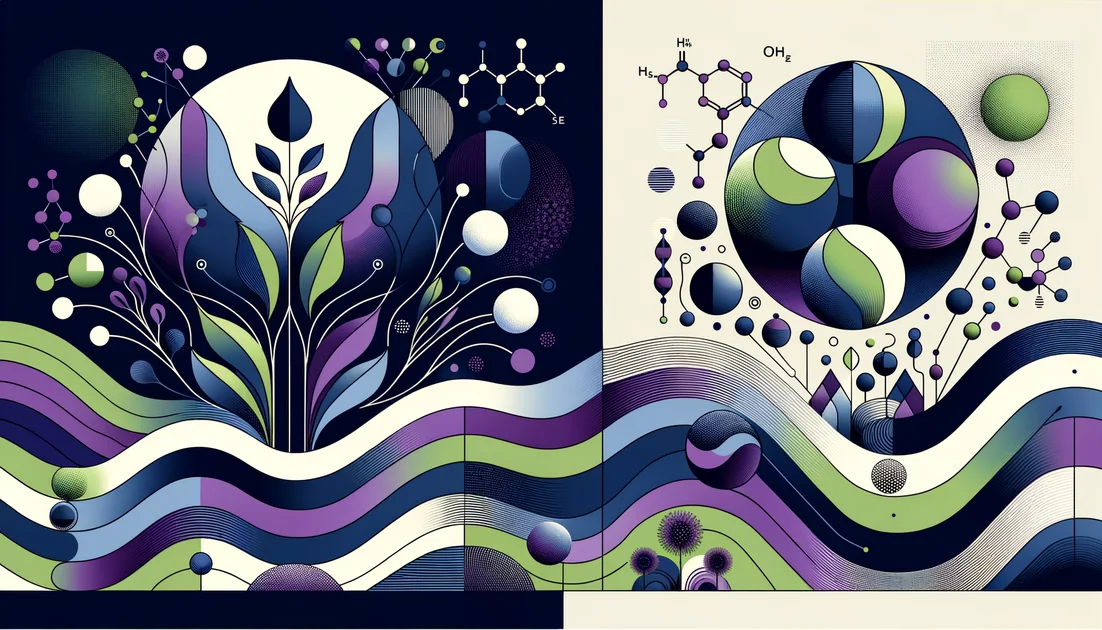
Turmeric vs Curcumin
For targeted relief (e.g., knee osteoarthritis), choose a standardized, bioavailability-enhanced curcumin supplement. For everyday culinary wellness, use turmeric in food. [8][2]
Curcumin supplements win for most symptom-driven goals (notably knee osteoarthritis), largely due to dose control and bioavailability (piperine, phytosome, nanoparticles) backed by RCTs and meta-analyses. Turmeric is better for routine dietary use or if you prefer a gentler, food-first approach, but it's unlikely to deliver clinically studied curcuminoid doses without impractically large amounts. Quality and safety vary—pick standardized products and start low, especially with enhanced-absorption forms. [8][4][2][1]
The Comparison
Standardization: Typically unstandardized spice; full-spectrum extracts may include volatile oils (e.g., turmerones) with variable curcuminoids
Dosage: ~1–3 g/day culinary powder; provides ~30–90 mg curcuminoids per gram at ~3% average content (large variability) [^1]
Benefits
- •Convenient for daily cooking
- •Includes non-curcuminoid compounds (e.g., turmerones) that may act synergistically
Drawbacks
- •Low and variable curcuminoid dose
- •Hard to reach clinically studied doses via food alone
Safety:Generally safe in food amounts; supplement use shares curcumin cautions (GI upset; interacts with anticoagulants). High-bioavailability products may rarely cause liver injury. [2]
Standardization: Extracts typically 95% curcuminoids (curcumin, demethoxycurcumin, bisdemethoxycurcumin) per USP; many bioavailability-enhanced forms (piperine, phytosome, micelles, nanoparticles). [^3]
Dosage: Common 500–1,000 mg/day conventional extract; lower labeled mg for enhanced forms (e.g., ~90–500 mg) due to higher exposure; piperine 5–20 mg often used. [^4][^5][^6]
Benefits
- •Consistent, concentrated curcuminoid dose
- •Best evidence base for targeted outcomes (e.g., knee osteoarthritis)
Drawbacks
- •Formulation quality varies; some products mislabel or use synthetic curcumin
- •Enhanced-bioavailability forms have rare hepatotoxicity reports
Safety:GI upset possible; interacts with anticoagulants/antiplatelets; high-bioavailability curcumin has been linked to rare liver injury; observe ADI guidance (~0–3 mg/kg/day for curcumin as a food additive). [2][7]
Head-to-Head Analysis
Efficacy for common goal: knee osteoarthritis pain/function Critical
Winner:Curcumin (standardized curcuminoids)• Importance: high
Onset and time-to-effect
Winner:Curcumin (standardized curcuminoids)• Importance: medium
Enhanced-bioavailability curcumin (e.g., Theracurmin) achieves markedly higher and faster plasma exposure than unformulated powder, plausibly shortening time to effect in symptom trials. [5]
Bioavailability and delivery options Critical
Winner:Curcumin (standardized curcuminoids)• Importance: high
Standardization/consistency Critical
Winner:Curcumin (standardized curcuminoids)• Importance: high
Safety/tolerability Critical
Winner:Tie• Importance: high
Both are generally well-tolerated; GI upset is most common. Rare liver injury signals have emerged mainly with enhanced-bioavailability curcumin; food-level turmeric is low risk. Use caution with anticoagulants. [2]
Cost/value per effective dose
Winner:Curcumin (standardized curcuminoids)• Importance: medium
To match ~500 mg curcuminoids from supplements, you'd need roughly 15–20 g turmeric powder (at ~3% average), which is impractical; standardized curcumin delivers target doses efficiently. [1]
Real-world adoption and availability
Winner:Curcumin (standardized curcuminoids)• Importance: medium
Most retail 'turmeric' supplements are actually curcuminoid extracts; many include piperine or other enhancers, reflecting market adoption for efficacy. Quality varies, so vet brands. [12]
Stacking/compatibility (with diet/pepper/fats)
Winner:Turmeric (whole root/powder, full-spectrum)• Importance: low
Common Questions
How much turmeric would I need to match a 500 mg curcuminoid supplement?
At ~3% average curcumin content, roughly 15–20 g turmeric powder—impractical for most people. [1]
Should I always choose piperine-enhanced curcumin?
It boosts exposure, but may interact with medications and rarely link to liver injury; discuss with your clinician. [4][2]
Do I need fat with curcumin?
Fat can help, but modern enhanced formulations (phytosome, nanoparticles) primarily drive higher exposure. [6][5]
Is curcumin proven for heart health?
Evidence suggests small lipid improvements, especially in metabolic conditions, but effects are modest. [13][14]
Can I use both turmeric in food and a curcumin supplement?
Yes, but track total intake and watch interactions; start low and reassess after 8–12 weeks. [2]
Which Should You Choose?
Knee osteoarthritis pain and stiffness
Everyday anti-inflammatory cooking/wellness
Cardiometabolic support (lipids)
Exercise recovery (muscle soreness/CK)
Choose:Curcumin (standardized curcuminoids)
Meta-analysis shows curcumin reduces DOMS and CK after strenuous exercise; standardized dosing is key. [15]
Sensitive to side effects or on anticoagulants
Choose:Turmeric (whole root/powder, full-spectrum)
Prefer food-level turmeric or avoid supplementation; enhanced-bioavailability curcumin carries rare liver-injury signals and can affect bleeding risk. Consult your clinician. [2]
You might also like
Explore more of our evidence-led investigations, comparisons, and guides across every article style.

Life Extension
Life Extension's paradox: quality-control muscle, request-only proof, and a cleaned-up regulatory trail

Theobromine vs TeaCrine (theacrine)
For smooth, long-lasting, low-stimulation energy, choose TeaCrine 100–200 mg in the morning; it shows sustained subjective energy without HR/BP spikes. Pick theobromine only if you want the mildest CNS effect and lowest "buzz," but expect little measurable energizing benefit. [1][2][7]

Best for focus
L-theanine (100–200 mg) + caffeine (40–160 mg)

Ubiquinone (Coenzyme Q10)
A young scientist notices a strange yellow tint in a cauliflower extract—and, by following that color, helps uncover a molecule that would one day divide cardiologists, disappoint neurologists, and quietly change a few lives.


Tocotrienols
The stealthier cousins of vitamin E—built with springy tails that move differently in cell membranes and behave differently in your body.




